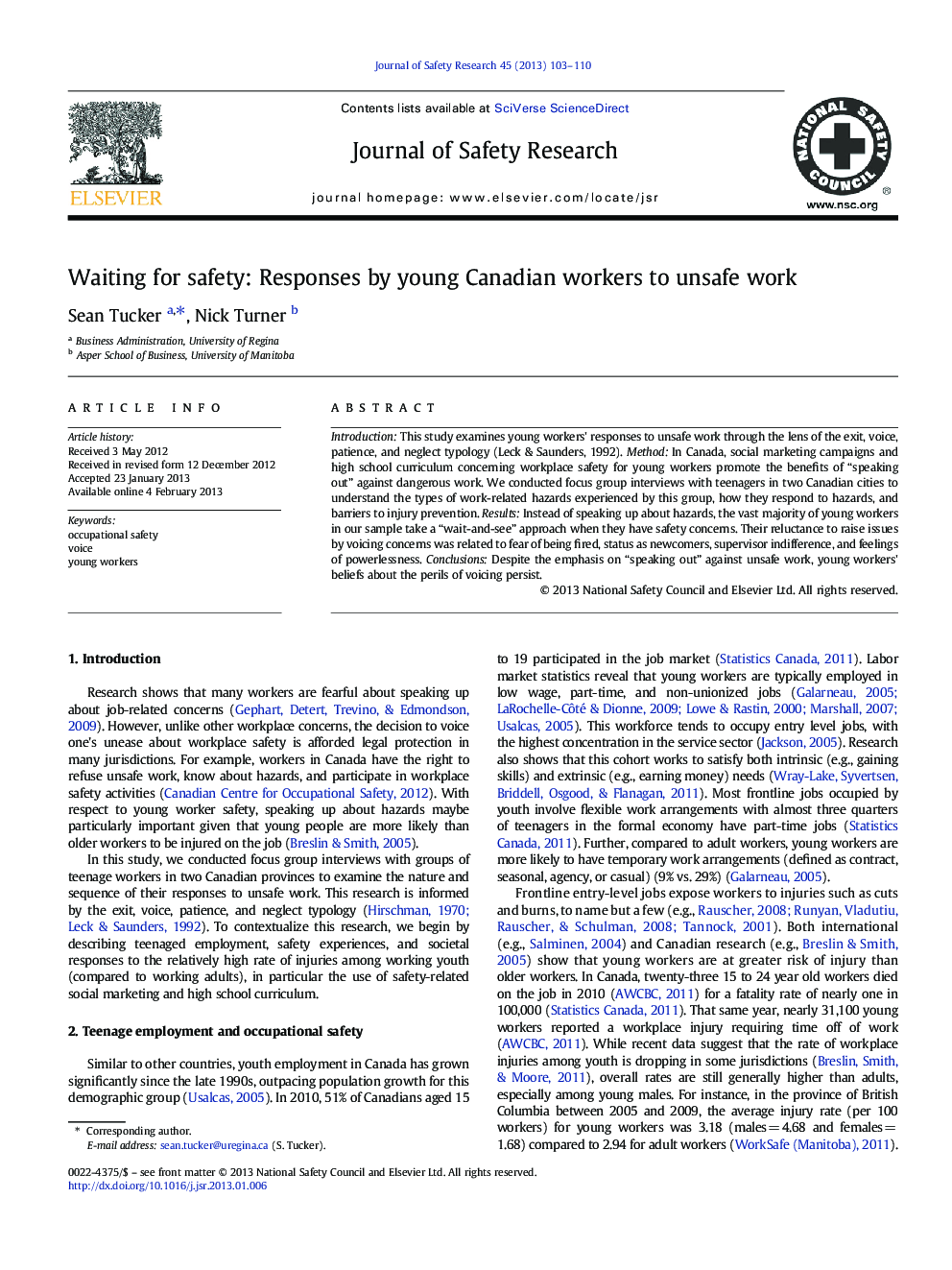| Article ID | Journal | Published Year | Pages | File Type |
|---|---|---|---|---|
| 587378 | Journal of Safety Research | 2013 | 8 Pages |
IntroductionThis study examines young workers' responses to unsafe work through the lens of the exit, voice, patience, and neglect typology (Leck & Saunders, 1992).MethodIn Canada, social marketing campaigns and high school curriculum concerning workplace safety for young workers promote the benefits of “speaking out” against dangerous work. We conducted focus group interviews with teenagers in two Canadian cities to understand the types of work-related hazards experienced by this group, how they respond to hazards, and barriers to injury prevention.ResultsInstead of speaking up about hazards, the vast majority of young workers in our sample take a “wait-and-see” approach when they have safety concerns. Their reluctance to raise issues by voicing concerns was related to fear of being fired, status as newcomers, supervisor indifference, and feelings of powerlessness.ConclusionsDespite the emphasis on “speaking out” against unsafe work, young workers' beliefs about the perils of voicing persist.
► While speaking up about workplace hazards is important to injury prevention, we found that voice was used infrequently by the young workers we interviewed. ► Participants preferred to take a “wait-and-see” approach when they have safety concerns. ► Their reluctance to raise issues by voicing safety concerns was related to their fear of being fired, status as newcomers, supervisor indifference, and feelings of powerlessness. ► Voice was a social process whereby teenage workers informally consult work colleagues about safety issues. When co-workers agree that a problem exists, the concern is legitimated and collective or individual action can occur. ► Despite the social marketing push to “speak out,” young workers’ beliefs about the perils of voicing persist.
